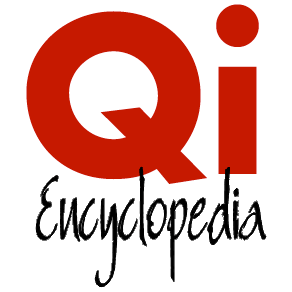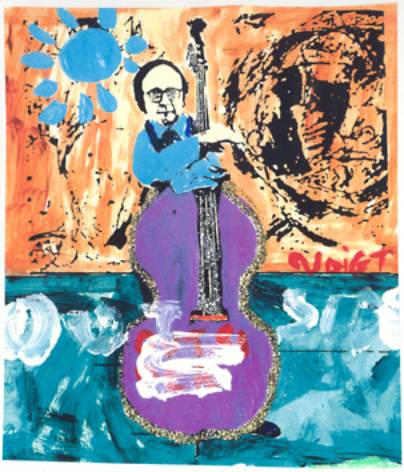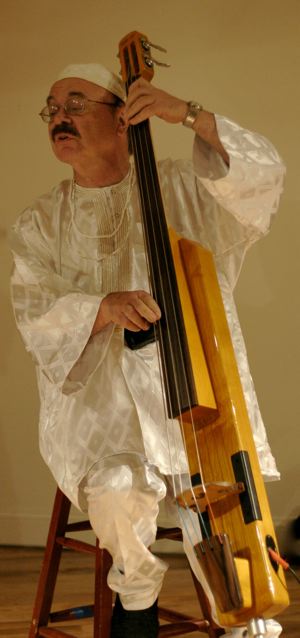
sponsor: Qi Journal
Navigation:
Portals
|
article: Qigong For Creativity In Music | author: John Voigt | date: 2023-11-22 10:27:08
|
|
Qigong For Creativity In MusicBy John Voigt
Poetry is the expression of the will or aspiration. (from "The Records of Music"—Yue Ji, in Zhang Yu Huan & Ken Rose. A Brief History of Qi.) The ThesisFor virtually every day in the last fifty years I have been involved with the education and playing of music. In that time I continually found a shocking disconnect: What the music schools were doing seemed valid, but it seldom agreed with what the best musicians and singers claimed to be really important. Normal professional education dealt with mechanical techniques; yet many of the best performers and composers I came across spoke and wrote about their mental intention, physical movement, and controlling body energies to better their skills. Even though most of them in their conversations (and in their writings) did not know it, for me many of their ideas related to certain basic concepts in Qigong such as yi, wai dan, and tao yin: meaning “focused intention,” “external alchemy,” and “leading and guiding [qi]. The Chinese characters for these three are 意, 外丹, 導引. In the western world, qigong has yet to gain the popularity it has in Asia. Therefore, very few of these great vocalists and players use such terms, but still I believe such concepts in qigong are strongly related with what many of them are attempting to define and use. I believe the same is true for all the arts, but it is most apparent in music. Added to that, there are many teachers and students of qigong who also play or sing. This article is written for them and for anyone else who wishes to enhance their skills and excel as a creative performer or composer. Even someone new to the study of qigong should benefit from reading and doing some of the following exercises. 
A photograph of John performing at a Jackson Pollock Black and White painting exhibition at the Institute of Contemporary Art, Boston. He painted over the photo with acrylic paints to change Pollock’s Abstract Expressionism to his Outsider Art for his handmade CD covers. Great Music is not about NotesWhat makes any art great is the use and communication of the energy of life. Most listeners, viewers, and readers only subliminally sense this vitality. They do not know it in the verbal part of their minds, but they demand it from any art they choose to experience. Without that life energy—here we call it qi energy—any art is lifeless, academic, and weak. In essence qigong for musical creativity is about consciously directing, then becoming one with this creative energy. Great artists in all the art forms do this and have done this—usually intuitively—throughout the ages. The first step is to mentally perceive and experience creative energy (Qi-Energy). The next step is learning how to move and direct it. The final step is when 1. the mind, 2. the energy, 3. the act of creating, 4. the created sounds, and 5. the listener all merge into a unity of beauty that is beyond the ego. Perceiving The Qi EnergyEveryone from birth to death continually uses Qi—(historically also known as Chi, or Ch'i). It is the vital energy of life. It is like the atmosphere around us: normally we are not aware of it—but without it we would be dead in a moment. ExercisesHere is an easy exercise to perceive energy flows in your body. Stand up now and stretch, as you would when you wake up in the morning. Do it now. Feels good doesn't it? Stretching opens pathways in the body for the qi/energy to flow and bring an aware non-ego relaxation that is needed to create the best art. And it harmonizes your entire being as well. Another qigong exercise: breathe comfortably, deeply, and gently into your lower abdomen. The same as you might tell a friend to do if he or she were emotionally freaking out about something. Paying attention to the way it feels inside, breathe deeply into your lower abdomen. Don't just read this and think about it. Do it now. It should feel really good. As with stretching, deep aware breathing opens pathways in the body for the Qi to flow and bring a full relaxation that is needed to harmonize your entire being—as well as to create your best art. Now sit with your arms straight in front of you, palms facing each other. Have your elbows loosely hanging down as you pretend there is a string around both wrists lifting them up. Breathe in as you move your hands apart, then breathe out and have your palms move toward each other, but don't have them touch. You should begin to feel the Qi/energy radiating between your palms, something like pulling taffy. It may manifest as a magnetic electrical tingling, or an increased bodily heat, (or as any other kind of physical sensation). If you don't perceive it yet, just imagine it—that trick might make it work for you just the same. You probably will not see the Qi/energy, and that is absolutely okay; but in time you should be able to perceive it rather like the way you can perceive there is air around you: you know it's there—without it you'd be soon dead—but you do not "see" it. (Advanced students of energy work [qigong] may witness it as something like a multi-dimensional phosphorescence.) An Exercise For VocalistsThis exercise is an introduction to qigong for musical creativity. With it emotions are turned into sound. Read it through a few times before you begin practicing it. Stand, with the center of your lower abdomen, chest and head in a straight line. To do this imagine a string pulling up from the crown of your head as you gently tuck your tailbone down. Your feet should be pointing forward—as if you were standing on railroad tracks. Your knees should be slightly bent. With feet firmly planted about shoulder width apart, circle your pelvis left-back, right-forward (like a kid's hula hoop). Then go the other way, right-back, left forward. Do each way five to ten times. Now move your head gently from side to side. Roll your shoulders, first forwards then backwards. Go slowly and easily. Do these each about five times. This will open your neck, throat, and chest. Bring your attention to the center of the lower abdomen, just about an inch and a half below your navel and about two inches behind it. Breathe deeply in and out, sending the air/oxygen/energy there to that place and exhaling out any stale bad qi/air. Imagine you are filling and storing energy into your lower belly. Do this for approximately three minutes. Now when you exhale, open your mouth wide and yawn. Do it about five times. Then allow the yawns to become sighs. Do this five-to-ten times. Now choose an emotion or feeling. Positive feelings are the best to use. For suggestions you could use love, desire, happiness, joy, or ecstasy. (Note: If you are emotionally and mentally healthy, in time you could possibility experiment with less positive emotions such as sadness, anger, lust, or greed to allow for extended artistic expression. But please understand that this might open a Pandora's Box liberating things that best should not presently be set free. Be cautious and careful, though in the hands of a competent psychotherapist this could provide a useful technique for mental healing. But first talk to your professional health practitioner. In any case: BE CAREFUL!) 
John playing his upright electric bass. Take your chosen emotion and breathe it into your lower belly. Continue sighing on the out-breath. A minute or two of this should be enough. Without any effort, inhibition or restraint, now allow that emotion to rise from the lower abdomen up to your throat and become part of each sigh. Then let each emotion-filled sigh becomes a sound. Take it easy with this: do not force this or be too loud, and breathe deeply gently and fully to support your vocal cords so as not to injure them. Don't analyze. Don't criticize. Do not kill your cry of passion with critical thinking. With constant observation completely be aware; just do it as you listen and observe. Just make sure that you don't strain your vocal apparatus by being too loud. Go slowly and easily. Other than that, simply allow the emotional energy sigh-singing to do whatever it wants to do. Have fun with it for a few minutes. With practice, this sigh-singing can grow longer, more powerful, more truthful. When you are totally comfortable doing this exercise, invite a friend to listen. Do not tell them in advance what you are about to do. Sing a few sounds naturally and normally; then pump an emotion into the lower abdomen and join its passion to your vocalizations. Most likely they will be amazed and tell you how better you sounded the second time. (It is suggested that you invite someone to check you out because when you are doing such Art-Energy Qigong you are "in the Zone" and usually are not be aware of how much more powerful you are sounding.) For All InstrumentalistsAfter I did my first gig with rock superstar Thurston Moore (of Sonic Youth fame) I asked him how he did it, how he played the way he did. His answer was, "First I put my mind on empty, and then I become a ghost." Immediately, I thought this is like qigong! He is going into a mental state similar to wu-wai (a state of non-action filled with silent possible creation), and then perceiving Qi—(his "ghost" being like a 19th century English spiritual séance where radiant globs of spooky light flash in the darkness). Then he merged with and became the Qi as in Daoist alchemy. The gig is recorded on Aum Fidelity Records. You may listen to a portion of the performance here on YouTube at "Fuzz Against Junk". The ExerciseThis exercise consists of a warm up, then storing the energy in the lower belly, then moving it into the arms and fingers, then into your instrument where it will become something like the extra-dimensional light of Thurston Moore's "ghost." Do this Warm Up for five to ten minutes: 1. Stand and stretch your hands and arms upwards. Move your head gently side-to-side. Rotate your shoulders, then arms forwards and backwards. Circle your hips one way, then the other. Shake out your legs. Squeeze your toes. 2. Now Breathe deeply into your lower abdomen. With a quiet focused awareness feel the energy being stored there. 3. Move your arms in front of you, with palms facing each other. As you inhale the hands move away from each other. As you exhale the palms move in towards each other. Begin to sense the Qi-Energy as an electromagnetic force, or warmth, radiating between the center-area of each palm. If you don't feel anything, just imagine that you do. 4. Continue the relaxed deep breathing as you go to your instrument. Direct the energy you perceive into your instrument. Feel it and you are one. Do this for three to five minutes. 5. Without any mental critical blah-blah, begin to play. Don't listen to the sounds you are making, Instead, close your eyelids 3/4s of the way. Imagine, visualize, or actually perceive that the fingers are drawing forth sparkles of radioactive-like phosphorescence from the instrument. You are not striking down fast and hard with your fingers—it is that the sparkling light is instantaneously drawn up and out as your fingers and hand raise up. This can work with any instrument that is played with the hands: percussion, strings, keyboard. 6. For wind instruments, wiggle your fingers on the keys or valves, and blow air into the instrument paying little attention to how it sounds. Instead, concentrate on imagining and creating colorful streams of light immerging from the bell of the horn. To summarize: Direct Qi-Energy to hands. Then to the instrument. Be aware of how it all becomes part of the body electric. Without any word-thinking or listening, draw forth sparkles of flashing radiant light. Making Radiant-Energy MusicAfter you can draw forth sparkles of flashing radiant light from your instrument, continue by memorizing a very short piece of music. Now as in the above exercises, get into a qigong creative energy flow zone. Then play that piece with total disregard for how it sounds. Just concern yourself with perceiving the emanating Qi-Energy as a sparkling presence. Again—no need to listen: this is about the energy not the music. Paradoxically, doing that practice over time will make your music sound giant steps better. Improvisers can do this exercise by working with only a few notes, or with a short motivic phrase. Don't show off. Don't let habit creep into what you are doing. Stay with the energy. As for all Art–Energy practices, have someone who is not aware of you doing the exercise comment on your completed work. Editor’s note: This article was originally published in Qi Journal, Spring 2008 issue. It was modified by the author in the summer of 2022. John has played in a wide variety of settings in throughout the United States and in Austria, Israel, Germany and Poland. Also for the Broadway Musicals: Hello Dolly, Hair, and My Fair Lady (with Rex Harrison). He was Library Director for thirty years at Berklee College. Taught at Boston Arts Academy and at Massachusetts College of Art, and lectured at the Institute of Jazz Studies, Rutgers. John was on these two award winning CDs: "Top Ten Critics' picks" [Best Jazz CDs of the Year]: Revolt of the Negro Lawn Jockeys. Gerald Futrich--Coda, 300/301. "Top Ten Critics' Picks" [Best Jazz CDs of the Year]: Fire In The Valley. Steve Holtje--Jazziz, vol. 15/3 |
